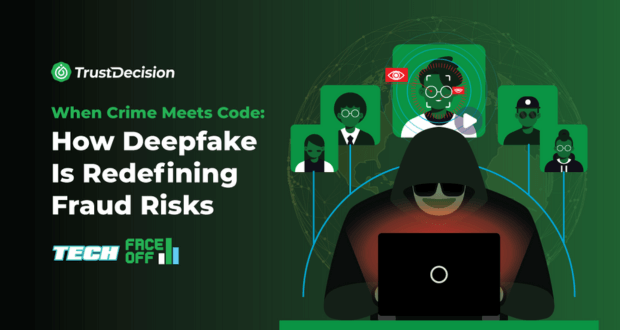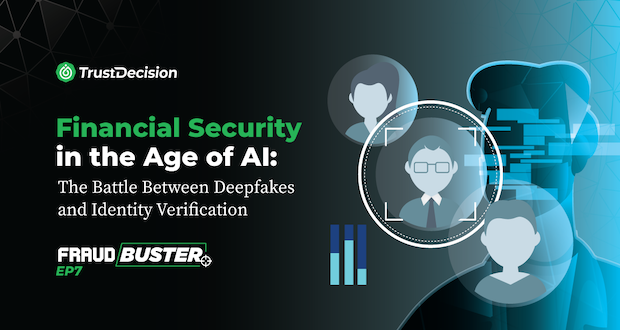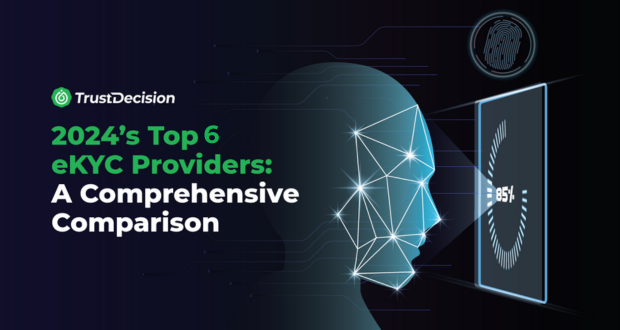Understanding CNP Fraud
Definition of CNP Fraud
Card-Not-Present (CNP) fraud occurs when a fraudulent transaction is made without the physical presence of the payment card. This type of fraud is most common in online, phone, and mail-order transactions where the cardholder does not need to present the actual card. Instead, the fraudster uses stolen card information, such as the card number, expiration date, and CVV code, to make unauthorized purchases.
Common Methods of CNP Fraud
CNP fraud can be executed through various methods, including but not limited to:
Phishing and Social Engineering: Fraudsters trick individuals into revealing their card details through deceptive emails, messages, or phone calls.
Data Breaches: Cybercriminals hack into databases of businesses to steal large volumes of card information.
Carding: Fraudsters test stolen card information on small transactions to verify their validity before making larger purchases.
Account Takeover: Fraudsters gain unauthorized access to a user's account by obtaining login credentials, often through phishing or data breaches, and then use the stored payment information for fraudulent transactions.
Synthetic Identity Fraud: Fraudsters create fake identities using a combination of real and fabricated information to open accounts and make fraudulent transactions.
Impact on Businesses and Consumers
The repercussions of CNP fraud are far-reaching and affect both businesses and consumers in several ways:
For Businesses:
- Financial Losses: Businesses bear the brunt of chargebacks and lost merchandise, leading to significant financial losses.
- Reputation Damage: Frequent fraud incidents can erode customer trust and damage the business's reputation.
- Increased Operational Costs: Businesses must invest in advanced CNP fraud detection software and other security measures, increasing operational costs.
- Regulatory Penalties: Failure to comply with data protection regulations can result in hefty fines and legal consequences.
For Consumers:
- Identity Theft: Victims of CNP fraud often face identity theft, leading to unauthorized transactions and financial loss.
- Inconvenience and Stress: Consumers must go through the hassle of disputing fraudulent charges and replacing compromised cards.
- Loss of Trust: Repeated fraud incidents can lead to a loss of trust in online transactions and digital payment methods.
Understanding these aspects of CNP fraud is crucial for developing effective CNP fraud prevention and protection strategies. By recognizing the methods used by fraudsters and the impact on stakeholders, businesses can better prepare to combat this growing threat.
Current Challenges in CNP Fraud Prevention
Limitations of Traditional CNP Fraud Detection Software
Traditional CNP fraud detection software often falls short in effectively combating modern CNP fraud due to several limitations:
Static Rule-Based Systems: Many traditional systems rely on static rules that can be easily circumvented by sophisticated fraud tactics. These systems lack the adaptability to respond to new and evolving fraud patterns.
High False Positives: Conventional CNP fraud detection software tends to generate a high number of false positives, flagging legitimate transactions as fraudulent. This not only frustrates customers but also leads to lost sales and increased operational costs.
Limited Data Integration: Traditional solutions often fail to integrate data from multiple sources, limiting their ability to provide a comprehensive view of transaction risk. This fragmented approach hampers effective CNP fraud detection and prevention.
Increasing Sophistication of Fraud Tactics
Fraudsters are continually evolving their methods, making CNP fraud protection increasingly challenging:
Advanced Phishing and Social Engineering: Fraudsters use sophisticated phishing techniques and social engineering tactics to deceive individuals into revealing their card information.
Use of AI and Machine Learning: Cybercriminals are leveraging AI and machine learning to automate and enhance their fraud tactics, making it harder for traditional CNP fraud detection software to keep up.
Synthetic Identities: The creation of synthetic identities, which combine real and fake information, makes it difficult for traditional systems to detect fraudulent activities.
Dark Web Marketplaces: The availability of stolen card information on dark web marketplaces enables fraudsters to easily obtain and use card details for CNP fraud.
High Rate of Chargebacks and Financial Losses
Chargebacks and financial losses remain a significant challenge in CNP fraud prevention:
Financial Burden on Businesses: Chargebacks result in direct financial losses for businesses, as they are often held liable for fraudulent transactions. This financial burden can be substantial, especially for small and medium-sized enterprises.
Operational Costs: Businesses must invest in advanced CNP fraud solutions and CNP fraud detection apps to mitigate the risk of fraud. These investments, while necessary, increase operational costs.
Reputation Damage: Frequent chargebacks and fraud incidents can damage a business's reputation, leading to a loss of customer trust and loyalty.
Regulatory Compliance: Businesses must comply with stringent data protection regulations to avoid penalties. Failure to implement effective CNP fraud prevention measures can result in regulatory fines and legal consequences.
Addressing these challenges requires a multi-faceted approach that combines advanced CNP fraud detection software, real-time CNP fraud detection apps, and comprehensive CNP fraud solutions. By understanding the limitations of traditional methods and the sophistication of modern fraud tactics, businesses can better prepare to prevent chargeback CNP fraud and protect their financial assets.
Comprehensive CNP Fraud Solutions for 2024
Advanced CNP Fraud Detection Software
The cornerstone of effective CNP fraud protection in 2024 is advanced CNP fraud detection software. These solutions leverage cutting-edge technologies to provide robust and reliable fraud detection capabilities:
Behavioral Analytics: By analyzing user behavior patterns, advanced software can detect anomalies that may indicate fraudulent activity. This proactive approach enhances CNP fraud prevention.
Device Fingerprinting: Identifying unique device characteristics helps in recognizing and flagging suspicious devices, adding an extra layer of security.
Transaction Monitoring: Continuous monitoring of transactions in real-time allows for immediate identification and mitigation of potential fraud.
Integration of Machine Learning and AI
The integration of machine learning and artificial intelligence (AI) is revolutionizing CNP fraud detection and prevention:
Adaptive Learning: Machine learning algorithms continuously learn from new data, adapting to emerging fraud patterns and tactics. This ensures that CNP fraud detection software remains effective against evolving threats.
Predictive Analytics: AI-driven predictive analytics can forecast potential fraud scenarios, enabling businesses to take preemptive measures.
Automated Decision-Making: AI can automate the decision-making process, reducing the time and effort required to identify and respond to fraudulent activities.
Real-time CNP Fraud Detection Apps
Real-time CNP fraud detection apps are essential tools for businesses seeking to enhance their CNP fraud protection:
Instant Alerts: These apps provide instant alerts for suspicious transactions, allowing businesses to take immediate action to prevent chargeback CNP fraud.
User-Friendly Interfaces: Designed for ease of use, these apps enable businesses to monitor transactions and manage fraud prevention efforts efficiently.
Mobile Integration: With the increasing use of mobile devices for transactions, real-time CNP fraud detection apps ensure that businesses can protect their customers across all platforms.
Multi-layered Security Protocols
A comprehensive approach to CNP fraud prevention involves implementing multi-layered security protocols:
Two-Factor Authentication (2FA): Adding an extra layer of security by requiring a second form of verification, such as a one-time password (OTP) sent to the user's mobile device.
Tokenization: Replacing sensitive card information with unique tokens that can only be used within a specific context, reducing the risk of data breaches.
Encryption: Ensuring that all transaction data is encrypted, both in transit and at rest, to protect against unauthorized access.
By combining advanced CNP fraud detection software, machine learning and AI, real-time CNP fraud detection apps, and multi-layered security protocols, businesses can create a robust defense against CNP fraud. These comprehensive CNP fraud solutions for 2024 are designed to adapt to the ever-changing landscape of digital transactions, providing effective protection and prevention measures to safeguard financial assets and maintain customer trust.
Strategies to Prevent Chargeback CNP Fraud
Enhanced Verification Processes
Implementing enhanced verification processes is crucial for preventing chargeback CNP fraud. These processes ensure that only legitimate transactions are approved, reducing the risk of fraudulent activities:
Multi-Factor Authentication (MFA): Utilizing MFA adds an extra layer of security by requiring users to provide two or more verification factors, such as a password and a one-time code sent to their mobile device. This makes it significantly harder for fraudsters to gain unauthorized access.
Biometric Verification: Incorporating biometric verification methods, such as facial recognition or fingerprint scanning, can further enhance security. These methods are difficult to replicate and provide a higher level of assurance that the transaction is being made by the legitimate cardholder.
Dynamic CVV Codes: Using dynamic CVV codes that change periodically can prevent fraudsters from using stolen card information for unauthorized transactions. This approach adds an additional layer of security to the verification process.
Customer Education and Awareness
Educating customers about CNP fraud and promoting awareness is a vital strategy in preventing chargeback CNP fraud. Informed customers are less likely to fall victim to fraud tactics and can take proactive steps to protect their information:
Awareness Campaigns: Conducting awareness campaigns to inform customers about common CNP fraud tactics, such as phishing and social engineering, can help them recognize and avoid potential threats.
Security Best Practices: Providing customers with guidelines on security best practices, such as using strong passwords, enabling MFA, and regularly monitoring their accounts for suspicious activity, can empower them to protect their information.
Regular Updates: Keeping customers informed about the latest security features and updates can help them stay vigilant and take advantage of new protective measures.
Collaboration with Financial Institutions
Collaborating with financial institutions is essential for a unified approach to CNP fraud prevention. Financial institutions have access to extensive data and resources that can enhance fraud detection and prevention efforts:
Data Sharing: Sharing data and insights with financial institutions can help identify emerging fraud patterns and trends. This collaborative approach enables businesses to stay ahead of fraudsters and implement effective CNP fraud solutions.
Joint Initiatives: Participating in joint initiatives with financial institutions, such as fraud prevention programs and industry working groups, can foster a collective effort to combat CNP fraud. These initiatives can lead to the development of standardized practices and protocols for CNP fraud protection.
Advanced Fraud Detection Tools: Leveraging advanced fraud detection tools and technologies provided by financial institutions can enhance a business's ability to detect and prevent fraudulent transactions. These tools often incorporate machine learning and AI to provide real-time CNP fraud detection and analysis.
By implementing enhanced verification processes, educating customers, and collaborating with financial institutions, businesses can effectively prevent chargeback CNP fraud. These strategies not only protect financial assets but also build customer trust and contribute to a safer digital transaction environment.
TrustDecision's Identity Verification
TrustDecision offers a robust identity verification solution designed to enhance CNP fraud protection and prevention. By leveraging advanced technologies and comprehensive verification processes, TrustDecision helps businesses effectively combat CNP fraud and reduce the risk of chargebacks.
Continuous Multi-Factor Authentication (MFA)
TrustDecision's identity verification solution includes continuous Multi-Factor Authentication (MFA) to provide an additional layer of security:
Continuous Monitoring: The system continuously monitors user behavior and transaction patterns to detect any abnormal activities that may indicate potential CNP fraud.
Triggering MFA: When abnormal behavior is detected, the system triggers MFA challenges, such as CAPTCHA or SMS verification, to ensure that the transaction is being made by the legitimate user. This approach significantly enhances CNP fraud prevention by making it more difficult for fraudsters to bypass security measures.
Reducing False Positives
One of the key challenges in CNP fraud detection is the high rate of false positives, which can lead to legitimate transactions being flagged as fraudulent. TrustDecision addresses this issue by utilizing advanced algorithms and machine learning:
Advanced Algorithms: The solution employs sophisticated algorithms that analyze a wide range of data points to accurately assess the risk of each transaction. This reduces the likelihood of false positives and ensures that legitimate transactions are not unnecessarily blocked.
Machine Learning: By incorporating machine learning, the system continuously learns from new data and adapts to emerging fraud patterns. This dynamic approach enhances the accuracy of CNP fraud detection and minimizes the occurrence of false positives, providing a smoother experience for legitimate users.
Efficient eKYC (Know Your Customer)
TrustDecision's identity verification solution includes an efficient eKYC process that validates users with access to a vast array of document types and advanced verification technologies:
Global Document Verification: The solution supports the verification of over 13,000 document types from 270 countries and 130 languages, ensuring comprehensive coverage and accuracy in user validation.
Optical Character Recognition (OCR): OCR technology is used to extract and verify information from identity documents quickly and accurately.
Liveness Detection: To prevent face spoofing attacks, the solution incorporates liveness detection, which ensures that the person being verified is physically present during the verification process.
Facial Comparison: Advanced facial comparison technology is used to match the user's face with the photo on their identity document, further enhancing the reliability of the verification process.
By implementing TrustDecision's identity verification solution, businesses can significantly enhance their CNP fraud protection and prevention efforts. The combination of continuous MFA, advanced algorithms, machine learning, and efficient eKYC processes provides a comprehensive approach to combating CNP fraud. This not only helps to prevent chargeback CNP fraud but also ensures a secure and seamless experience for legitimate users.
Future Trends in CNP Fraud Prevention
Emerging Technologies
As CNP fraud continues to evolve, so do the technologies designed to combat it. One of the most promising emerging technologies is blockchain, which offers a decentralized and immutable ledger that can enhance the security and transparency of transactions. By leveraging blockchain, businesses can create a tamper-proof record of transactions, making it significantly more difficult for fraudsters to manipulate data. Additionally, artificial intelligence (AI) and machine learning are set to remain at the forefront of CNP fraud detection software. These technologies can analyze vast amounts of data in real-time, identifying patterns and anomalies that may indicate fraudulent activity. As AI and machine learning algorithms become more sophisticated, their ability to detect and prevent CNP fraud will improve, providing businesses with a powerful tool for CNP fraud protection.
Behavioral biometrics is another emerging technology that analyzes unique user behaviors, such as typing patterns, mouse movements, and touchscreen interactions, to verify identity. This technology adds an additional layer of security by continuously monitoring user behavior and detecting deviations that may indicate fraud. Quantum computing, although still in its early stages, has the potential to revolutionize CNP fraud detection. Quantum computers can process information at unprecedented speeds, enabling real-time analysis of complex data sets and enhancing the accuracy of fraud detection. Furthermore, as Internet of Things (IoT) devices become more prevalent, securing these devices will be crucial in preventing CNP fraud. Advanced IoT security measures, such as device authentication and secure communication protocols, will help protect against unauthorized access and data breaches, further strengthening CNP fraud prevention efforts.
Predictions for the Next Five Years
The landscape of CNP fraud prevention is expected to undergo significant changes over the next five years. One key prediction is the increased adoption of AI and machine learning in CNP fraud detection software. Businesses will increasingly rely on these technologies to provide real-time, adaptive CNP fraud detection and prevention, reducing the risk of fraudulent transactions. There will also be a greater emphasis on multi-layered security protocols, which will become the standard for CNP fraud protection. Businesses will implement a combination of advanced verification processes, behavioral biometrics, and continuous monitoring to create a robust defense against fraud.
Collaboration between businesses, financial institutions, and regulatory bodies is expected to increase, with data sharing initiatives enabling the identification of emerging fraud patterns and the development of standardized CNP fraud solutions. This collective effort will enhance the overall effectiveness of CNP fraud prevention. Regulatory advancements will also play a significant role, as governments and regulatory bodies introduce stricter regulations and guidelines for CNP fraud prevention. Compliance with these regulations will be mandatory, driving businesses to adopt advanced CNP fraud detection software and other protective measures.
Consumer awareness and education will become increasingly important in the fight against CNP fraud. Businesses will invest in educating their customers about the risks of CNP fraud and the steps they can take to protect themselves. Informed consumers will be better equipped to recognize and avoid potential fraud, contributing to overall CNP fraud prevention efforts. Finally, the integration of blockchain technology and IoT security measures will enhance the overall security of digital transactions. Businesses will leverage these technologies to create a secure and transparent transaction environment, reducing the risk of CNP fraud and ensuring a safer digital marketplace.
By staying ahead of these emerging technologies and trends, businesses can significantly enhance their CNP fraud protection and prevention efforts. The future of CNP fraud prevention will be characterized by advanced technologies, collaborative efforts, and a proactive approach to security, ensuring that businesses and consumers alike are better protected against the ever-evolving threat of CNP fraud.
Conclusion
Card-Not-Present (CNP) fraud represents a significant and growing threat in the digital age, impacting both businesses and consumers. As e-commerce and digital transactions continue to expand, the need for robust CNP fraud protection becomes increasingly critical. Effective CNP fraud prevention measures are essential to safeguard financial assets, maintain consumer trust, and ensure the integrity of the digital marketplace. The challenges posed by traditional CNP fraud detection software, the increasing sophistication of fraud tactics, and the high rate of chargebacks and financial losses underscore the urgent need for advanced CNP fraud solutions. By understanding the methods used by fraudsters and the impact on stakeholders, businesses can better prepare to combat this pervasive threat.

%2520-%25202024%2520Solution.jpeg)







.jpeg)




